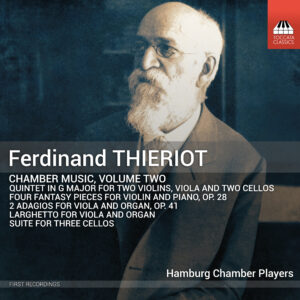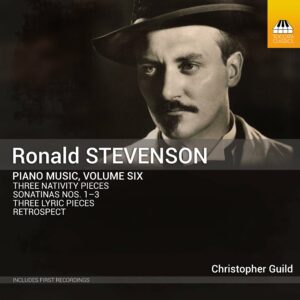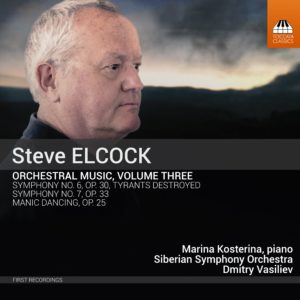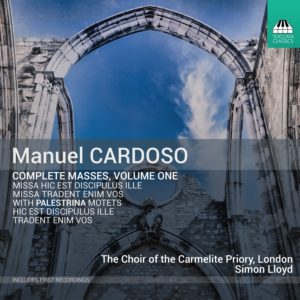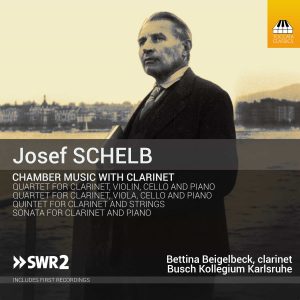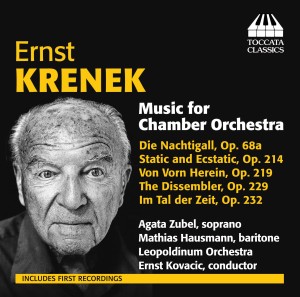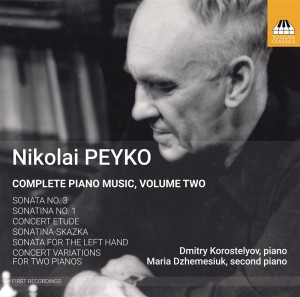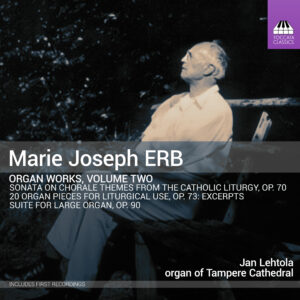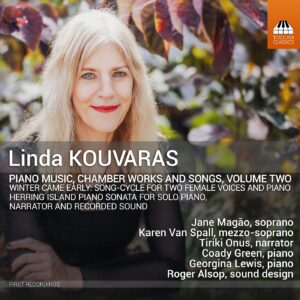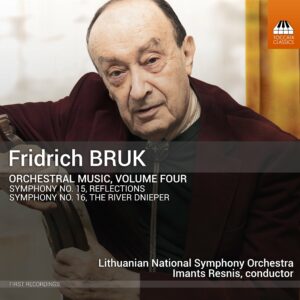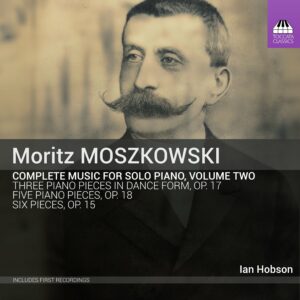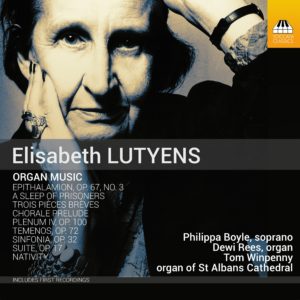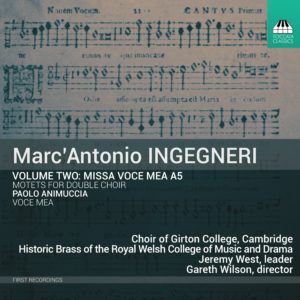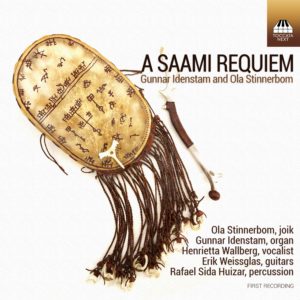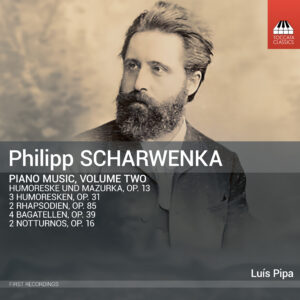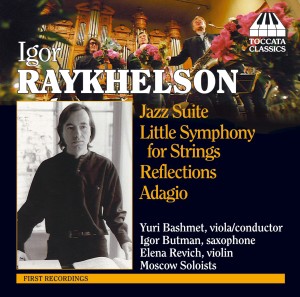Search Results for "The Black Alley Newty Ping" – Page 14
Showing results for black alley net ping
Ferdinand Thieriot: Chamber Music, Volume Two
The Hamburg-born Ferdinand Thieriot (1838–1919) not only shared a teacher – Eduard Marxsen – with Brahms; both composers use a very similar musical language, one which is richly melodic and effortlessly contrapuntal. The musicologist Wilhelm Altmann wrote that ‘Thieriot’s chamber music is without exception noble and pure. He writes with perfect command of form and expression’ – as the works on this second Toccata Classics volume prove, in their exquisite balance of depth and beauty.
Hamburg Chamber Players
Ian Mardon, violin
Matthias Brommann, violin
Julia Mensching, viola
Olga Dowbusch-Lubotsky, cello
Suren Anisonyan, cello
Clovis Michon, cello
Andrea Merlo, piano
Alexander Bürkle, organ
Ronald Stevenson: Piano Music, Volume Six
This sixth instalment in Christopher Guild’s survey of the piano music of Ronald Stevenson (1928–2015) on Toccata Classics concentrates on works from the beginning of his career, most of it written after his decisive encounter with the music of Busoni. Although Stevenson had not yet moved to Scotland, the influence of Scottish folksong can be heard in some of these pieces, all of which are cast in the lyrical counterpoint that was a hallmark of Stevenson’s mature style.
Christopher Guild, piano
Steve Elcock: Orchestral Music, Volume Three
This third volume of orchestral music by the Anglo-French composer Steve Elcock (b. 1957) features two symphonies and a quasi-concerto. Over the course of its two movements, the Sixth Symphony, which bears the title Tyrants Destroyed, moves from grief to outrage, rising to a grimly triumphant conclusion. The one-movement Seventh – with some of its material derived from the words of a song Elcock heard in a dream – runs a gamut of emotion, from anger to heartbreak, in its impassioned narrative. Manic Dancing, a piano concerto in all but name, inhabits a complex world of driving rhythms, nostalgic flashbacks and hectic dance music – buoyant and good-natured, like Martinů on speed.
Marina Kosterina, piano (Tracks 8-10)
Siberian Symphony Orchestra
Dmitry Vasiliev, conductor
Manuel Cardoso: Complete Masses, Volume One
Manuel Cardoso (1566–1650) was one of the most important composers of the golden age of Portuguese polyphony around the turn of the seventeenth century. But history has not been kind to him: the 1755 Lisbon earthquake that ruined the Convento do Carmo, where he spent most of his working life, also resulted in the loss of the only attested image of the composer and a good deal of his music – and much of that which survived has been neglected, his Masses included. This series will shed long-overdue light on these forgotten masterpieces, beginning with two ‘parody’ Masses, so called because they are based on existing music, in this instance two Palestrina motets.
The Choir of the Carmelite Priory, London
Simon Lloyd, director
Josef Schelb: Chamber Music with Clarinet
The Karlsruhe-based Josef Schelb (1894–1977) is one of the better-kept secrets of twentieth-century German music. His output was substantial: he lost most of his early music in a bombing raid in 1942, but – as if to make up for lost time – wrote some 150 more works after that. These four, for clarinet in various chamber combinations, show his music emerging from the influence of Hindemith and Berg and developing a freewheeling energy, contrapuntal command and rhythmic charge of its own – often animated by a touch of devilish humour.
Busch Kollegium Karlsruhe
Bettina Beigelbeck, clarinet
Yasushi Ideue, violin (Tracks 5–7, 12–15)
Ayu Ideue, violin (Tracks 5–7)
Wolfgang Wahl, viola (Tracks 5–11)
Gabriela Bradley, cello (Tracks 8–11)
Bernhard Lörcher, cello (Tracks 1–7)
Manfred Kratzer, piano (Tracks 1–4)
Ernst Krenek: Music for Chamber Orchestra
These five works for chamber orchestra by Ernst Krenek (1900-91) were written between 1931 and 1979 — both before and long after Krenek abandoned Hitler's Austria for California. They demonstrate that serial music, in capable hands, does not have to abandon the virtues of more conservative idioms: the emotions embraced here range from translucent lyricism, via powerful dramatic utterance, to uneasy existentialist humour.
Agata Zubel, soprano
Mathias Hausmann, baritone
Leopoldinum Orchestra, chamber orchestra
Ernst Kovacic, conductor
Nikolai Peyko: Complete Piano Music, Volume Two
The Russian composer Nikolai Peyko (1916-95) studied with Myaskovsky at the Moscow Conservatoire, where he later became Shostakovich's teaching assistant and then an important teacher in his own right. Peyko's piano music shares Shostakovich's fondness for irony and Prokofiev's for driving march-rhythms and playful good humour. Each of the two CDs in this complete recording of his piano music ends with one of Peyko's two works for two pianos, in this instance the wildly exciting Concert Variations — the first time that any of this music has been heard in its entirety.
Dmitry Korostelyov, piano; Maria Dzhemesiuk, second piano;
Marie Joseph Erb: Organ Works, Volume Two
The enormously prolific Marie Joseph Erb (1858–1944) has somehow escaped the attention of posterity, although the quality of his music is on a par with contemporary organist-composers whose works are far better known. Erb’s long life – he heard Berlioz conduct in 1863 and was still composing 80 years later – was focused on Strasbourg, where he was active as pianist, organist and professor, though he had studied in Paris, with Fauré, Gigout, Saint-Saëns and Widor, and later with Liszt in Weimar. This second Jan Lehtola/Toccata Classics album devoted to his organ music sandwiches six short pieces intended for liturgical use between two monumental works; indeed, in its combination of architectural magnificence and emotional intensity, the Sonata on Chorale Themes of the Catholic Liturgy may be one of the finest of all organ sonatas.
Jan Lehtola, organ of Tampere Cathedral
Linda Kouvaras: Piano Music, Chamber Works and Songs, Vol. 2
As with many other Australian composers, the music of Linda Kouvaras (b. 1960) has a strong sense of space, expressed in lyrical, elegiac melodic lines that soar over freewheeling piano textures. The two substantial works on this second Toccata Classics album of her music demonstrate her concern that her compositions engage with the outside world: the epic Herring Island Piano Sonata adds narrator and recorded sound – not least of local birds – to the piano to bring alive the Indigenous history of a small hidden paradise in downtown Melbourne, and the poems set in Winter Came Early reveal a mother and daughter coming to terms with a fatal diagnosis of cancer
Coady Green, piano
Georgina Lewis, piano
Jane Magão, soprano
Karen Van Spall, mezzo-soprano
Tiriki Onus, narrator
Roger Alsop, sound design
Fridrich Bruk: Orchestral Music, Volume Four
This fourth instalment of the recent symphonic output of Fridrich Bruk (born in Ukraine in 1937 but a Finnish resident since 1974) brings two earlier works – from when Bruk was merely in his late seventies. His Symphonies Nos. 15 and 16 – both predicated on Bruk’s concern for the environment – inhabit the sound-world that has become familiar from his more recent symphonies: almost a stream of consciousness expressed through wildly inventive orchestral writing in a kaleidoscope of colour and counterpoint, sitting somewhere between Villa-Lobos and Pettersson in its profligate abundance.
Lithuanian National Symphony Orchestra
Imants Resnis, conductor
Moritz Moszkowski: Complete Music for Solo Piano, Volume Two
Although Moritz Moszkowski (1854–1925) wrote a considerable quantity of piano music, only a single piece, ‘Étincelles’, made it into the repertoire, not least because Horowitz enjoyed playing it. The early works on this second instalment in Ian Hobson’s survey of Moszkowski’s complete music for solo piano reveal a debt to Mendelssohn and Schumann, but the effortless craftsmanship heard here already justifies a later remark of Paderewski’s: ‘After Chopin, Moszkowski best understands how to write for the piano, and his writing embraces the whole gamut of piano technique’. Most of the pieces in Opp. 15 and 18 are attractive salon miniatures, but the Three Piano Pieces in Dance Form, Op. 17, are extended Lisztian essays that showcase Moszkowski’s mastery of the keyboard and his command of form.
Ian Hobson, piano
Elisabeth Lutyens: Organ Music
The organ music of Elisabeth Lutyens (1906–83) presents a meeting of contrasts: it can at the same time be both angular and lyrical, and it spans an enormous dynamic range, from intimate delicacy to sheer, raw, hieratic power. Her reputation as one of Britain’s leading serial composers is belied, too, by the direct appeal, the range of colour and the narrative instinct of many of the pieces recorded here, most of them for the first time.
Philippa Boyle, soprano (Tracks 1, 6)
Dewi Rees, organ (Track 5)
Tom Winpenny, organ of St Albans Cathedral
Marc’Antonio Ingegneri: Volume Two: Missa Voce Mea A5, Motets for double choir
The Cremonese composer Marc’Antonio Ingegneri (c. 1535/36–92) is chiefly remembered as the teacher of Claudio Monteverdi, while, for well-nigh 500 years, his own achievements were left to sit in the shadows. This second in a series of pioneering recordings from the Choir of Girton College, Cambridge, reveals Ingegneri to have been one of the masters of his age, writing music of breathtaking richness and beauty: the works heard here combine learned, intricate counterpoint with the kind of sheer sonic thrill that brings a shiver of physical excitement. It is, of course, religious music, but it is also extraordinarily passionate, to a degree not previously heard, nor for centuries to come, until the rise of the great Romantic choral works.
Choir of Girton College, Cambridge (Tracks 1–3, 5–8, 10, 12–14)
Historic Brass of the Royal Welsh College of Music and Drama (Tracks 1, 3–14)
Jeremy West, leader
Gareth Wilson, director
A Saami Requiem
A Saami Requiem is an extraordinary meeting-place of musical cultures – western classical, Sámi yoik, Nordic folk-dance, electric rock, blues, improv and more. It takes the form of a journey to Saajva, the Kingdom of Death in Sámi religious practice. With it the Swedish organist Gunnar Idenstam and Sámi artist Ola Stinnerbom provide a parallel to the Christian Requiem, with Ola Stinnerbom as Noite, the shaman who acts as guide to the Kingdom of Death – and back to this life, celebrated in the uplifting closing hymn. Some of the percussion sounds are sampled from traditional Sámi drums made by Ola Stinnerbom after ancient models; the electric guitars provide a link to rock groups like Deep Purple and King Crimson; and Gunnar Idenstam’s unmistakable style marries the French organ tradition with the alluring world of Swedish folk-music.
Ola Stinnerbom, yoik (Tracks 2–14)
Gunnar Idenstam, organ (Tracks 1–7, 9–14)
Henrietta Wallberg, vocalist (Tracks 7, 8, 10)
Erik Weissglas, guitars (Tracks 3–6, 9, 12–14)
Rafael Sida Huizar, percussion (Tracks 3–6, 8, 10–14)
Philipp Scharwenka: Piano Music, Volume Two
As composer, pianist and educationalist, the Prussian Philipp Scharwenka (1847–1917) was one of most highly respected musicians of his day, although his star faded soon after his death. His music – more conservative and classical in orientation than that of his pianistcomposer brother, Xaver – sits somewhere between Chopin and Brahms, with echoes of Schubert and Schumann. This second instalment of a survey of his piano music is intended to put these immediately attractive works before the public once again – for the first time in over a century.
Luís Pipa, piano
Igor Raykhelson: Jazz Suite and other works
In the words of his friend the violist and conductor Yuri Bashmet, the composer-pianist Igor Raykhelson – born in Leningrad in 1961 and now resident in New York – 'possesses a superb mastery of both classical and jazz idioms’. The highly individual fusion of styles that results, Bashmet continues, 'elevates his music over that of many other composers creating in the genre often referred to as “crossover”’. The Jazz Suite on this CD exhibits Raykhelson’s popular style at its most infectiously catchy; the other three works here – in the Russian tradition of writing for strings initiated by Tchaikovsky – present the more classical side of his muse.
Igor Raykhelson, piano
Yuri Bashmet, viola, conductor
Elena Revich, violin
Igor Butman, saxophone
Yuri Golubev, double-bass
Eduard Zizak, drums
Moscow-Soloists, ensemble
Stay In the Know
JOIN THE TOCCATA NEWSLETTER
"*" indicates required fields
By visiting our site, you agree to our privacy policy regarding cookies, tracking statistics, etc.
